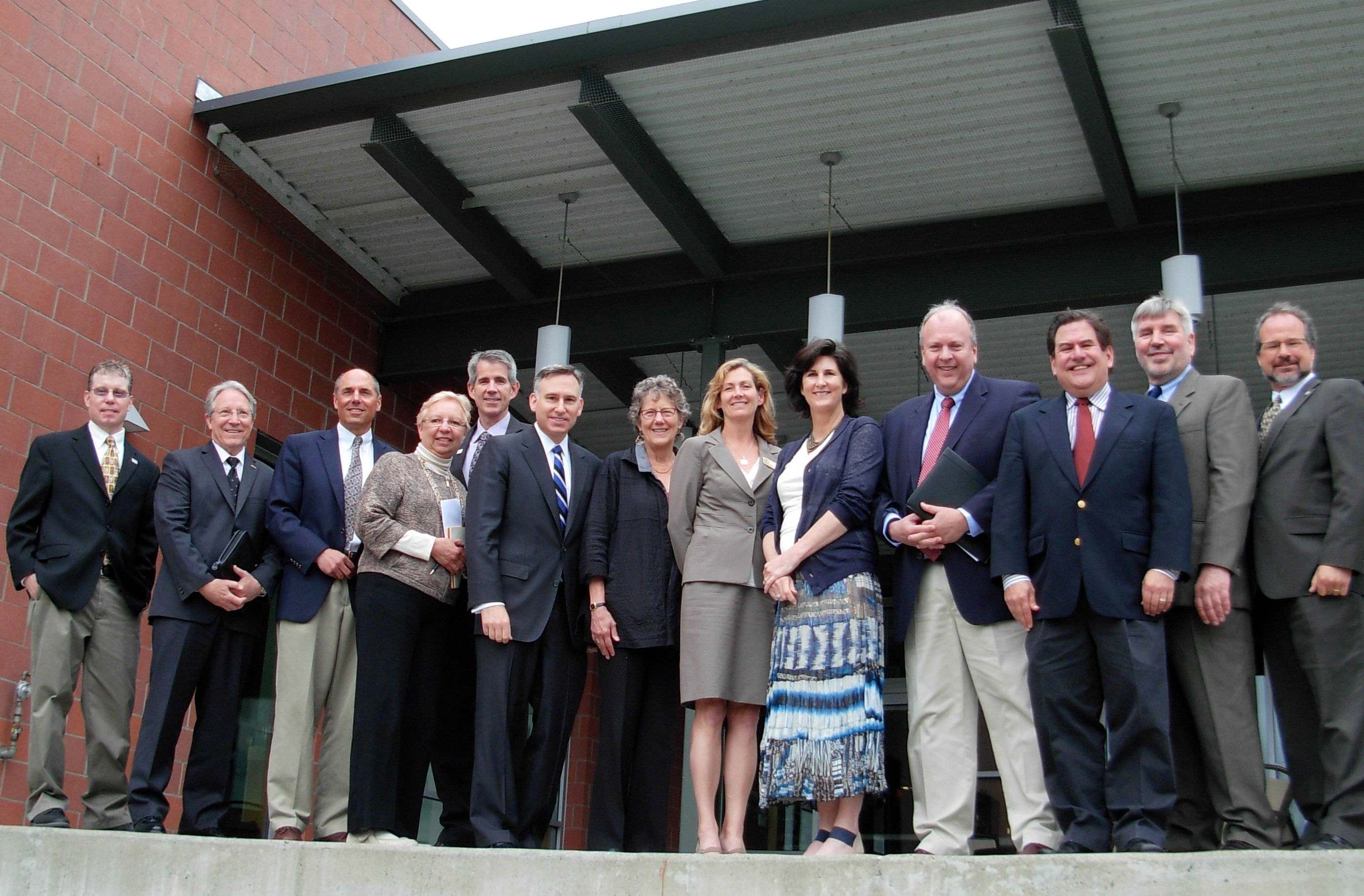Breaking free from fossil fuel is hard work, but local governments in Washington and Oregon are putting their shoulders to the wheel and demonstrating that it can be done. While the U.S. Environmental Protection Agency’s power plant regulations and Governor Inslee’s climate leadership have attracted headlines, cities and counties are putting wind in the sails of state and federal efforts by working together toward solutions in low-carbon urban transportation, energy supply, and buildings.
13th Largest County in U.S. Shows Leadership in Carbon Reduction
Thirteen city elected officials representing 70 percent of King County’s population joined Executive Dow Constantine on June 12 for a work session to discuss proposed joint city-county climate commitments, as part of the King County-Cities Climate Collaboration. The draft commitments were based on New Energy Cities’ analysis that King County could cut carbon reduction in half by 2030—by reducing vehicle miles traveled and vehicle emissions intensity, increasing renewable electricity use countywide, and improving the energy efficiency of both new and existing buildings. Executive Constantine is also a member of Washington Governor Inslee’s Carbon Emissions Reduction Taskforce.
Portland and Multnomah County, OR: Moving the Needle
The City of Portland and Multnomah County, OR reported in 2012 that community carbon emissions had decreased 26 percent per person and 6 percent total since 1990. Now building on their 2009 roadmap to cut carbon emissions 80 percent by 2050, the jurisdictions are wrapping up a stakeholder review and update, focused on integrating social equity into policies and plans. In related news, Seattle published its first citywide environmental accomplishments report this spring, finding that total carbon emissions from 2008 to 2012 increased 1 percent while per person emissions decreased 6%.
Urban Climate Solutions in the News
State agencies, businesses, and nonprofit partners all play essential roles in supporting urban climate solutions, as a round-up of this spring’s news stories shows. With thanks to Seth Zuckerman and the Climate Solutions Strategic Innovation team for their contributions:
Atlanta leapfrogged ahead of Seattle to become the second-largest U.S. market for electric vehicles in the 12 months ending in March, thanks to a $4,000 state tax credit, dirt-cheap electric rates for overnight charging (just 1.3 cents per kilowatt-hour), and carpool-lane access for electric cars. Meanwhile, Google unveiled its prototype for a self-driving car with no steering wheel, brakes, or accelerator pedals—a technology that could be disruptive on multiple levels—and Tesla freed its electric vehicle patents.
California struck a deal to invest $250 million in a bullet train from Los Angeles to San Francisco, using funds raised from the auction of carbon pollution permits under the state’s cap-and-trade system. Energy efficiency, transit-friendly housing, and other low-carbon transportation projects will also receive shares of the $870 million expected next year, once motor fuel joins electricity under the carbon cap.
California’s zero net energy building mandate will have significant ripple effects for the rest of the country: spurring advancement in building energy codes, improving technologies to monitor and manage building energy, increasing demand for on-site energy storage, reducing high-performance building costs, and sparking competition in the building performance industry.
Finally, people are more likely to bike to their destinations if bicycle lanes are separated from motor traffic by solid barriers than if they’re just painted on the street, according to a report from the National Institute for Transportation and Communities. Most residents say these so-called protected bike lanes—marked with planters or flexible posts, for instance—improve the quality of neighborhood life, even though they can make parking more difficult. Even better: vegetated barriers, which help bikers breathe cleaner air.
Image

Shoulders to the Wheel




